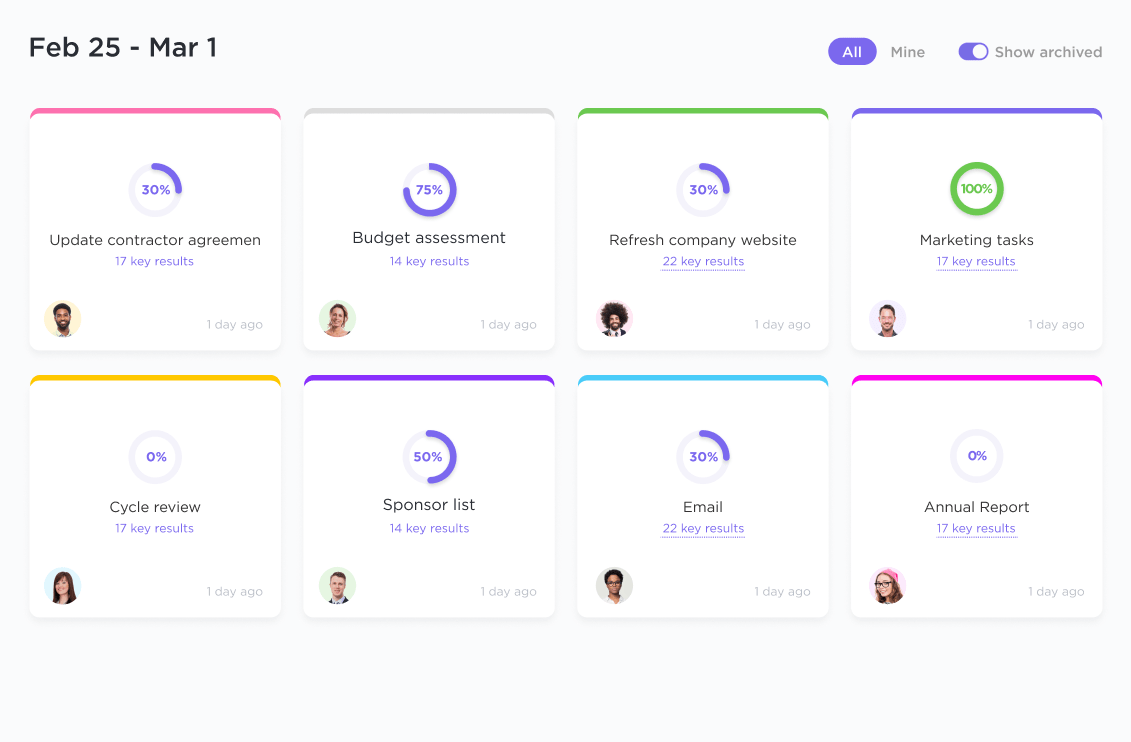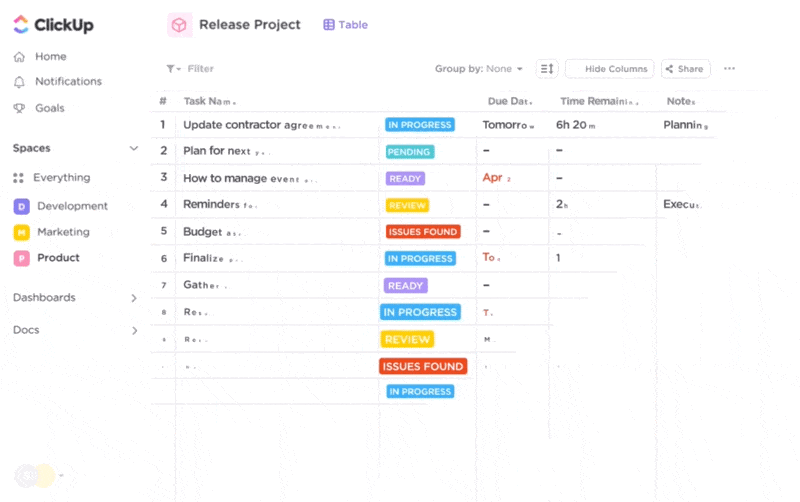A Complete Guide to Project Governance Framework for Modern Project Teams

Sorry, there were no results found for “”
Sorry, there were no results found for “”
Sorry, there were no results found for “”
Without governance, chaos reigns. This statement holds true in any situation requiring structure and systematic persistence. And, in the highly competitive and result-driven world of project management, there is absolutely no room for workplace chaos. Imagine trying to run a tech giant without rules, checks, or a strategic plan. That’s a recipe for disaster!
Think of project governance as your project’s superhero, bringing in:
In this article, we’re decoding what makes project governance important, connecting the dots between those big-picture governance principles and the nitty-gritty of your daily project grind. We’ll cover the basic concepts within project governance and the eight project governance components.
We’ll also explain the steps to develop effective project governance structures.
By definition, project governance is an oversight function that is aligned with the organization’s governance model and encompasses the project life cycle.
But this technical description can be hard to digest for many of us. In plainer terms, project governance is the set of rules and procedures that decide how a project will be run.
Project governance is the go-to structure—also called governance model or framework—for deciding:
Picture it as the guide for all project decisions, ensuring they align with organization objectives. In most organizations, the PMO is the owner of project management governance responsibilities.
Whether you’re ideating an agile release plan or a product launch, project governance entails having reliable policies, rules, functions, responsibilities, and conflict resolution measures—a map of how things get done and who’s in charge.
In understanding governance in project management, you’ll need to grasp the concept behind its three foundational pillars—a dynamic trio of structure, people, and information.
Think of your project like a well-oiled machine; its structure is the solid framework that holds everything together. We’re talking about guidelines, procedures, and detailed plans that essentially form the backbone for operations, offering the stability and direction needed for project success.
In most cases, the senior management or the governing or advisory committee is responsible for plotting the scope, structure, and vision for ongoing projects.
People are the heartbeat of your project. From the project manager to dedicated team members, everyone has a job to do. Their skills, involvement, and commitment become the driving force that can significantly influence how smoothly the project goes toward success.
This pillar of project governance covers elements like goal setting and stakeholder communication to improve the contribution of each team member.
Lastly, information is the fuel that keeps the project running without any problems. Clear, concise, and timely communication, along with accurate data, supports employees as well as decision-makers.
The goal here is to get rid of departmental silos and hidden information pockets often found in cross-functional teams.
While the significance of project governance is evident in complex projects, its importance extends to all projects. It’s absolutely vital in these five areas:
Project governance and organizational governance sound like overlapping concepts, but they differ in scope and focus. Project management governance is specific to projects, involving the management framework for decision-making and execution throughout the project life cycle. It defines roles, responsibilities, and processes tailored to orchestrate project success.
On the other hand, organizational governance has a broader scope, addressing the entire organization’s structure, policies, and decision-making processes. It sets the framework for sustained, long-term operations, guiding strategic objectives and overall functionality across various business processes and functions—like sales and HR—within the organization.
Here’s a table outlining the key differences between project governance and organizational governance:
| Aspect | Project governance | Organizational governance |
| Focus and scope | Concerned with project initiation, execution, and success | Encompasses the entire organization’s activities |
| Duration | Relatively temporary, aligned with project life cycle and market shifts | Permanent, providing an enduring framework that can last for decades |
| Decision-making | Project-specific decisions | Strategic direction at the organizational level |
| Responsibilities | Defines deliverables for project managers and team members | Assigns roles for executives, departments, and employees |
| Scale | Micro-level, limited to project planning | Macro-level, guiding the organization as a whole |
Here are the key components of project governance, along with examples:
In project governance, different roles ensure the project is aligned with organizational objectives, follows structured decision-making, and delivers expected outcomes. Each role establishes a chain of action and accountability, ensuring project parameters like time, cost, and quality are honored.
Here are the key roles in project governance:
Provides strategic direction, secures funding, and champions the project at the executive level.
Responsibilities:
Examples:
Represents the organization and often engages with the project manager to see how things are shaping up.
Responsibilities:
Examples:
Provides oversight, guidance, and decision-making at a strategic level.
Responsibilities:
Examples:
Oversees the day-to-day execution, ensuring the project is delivered on time, within scope, and on budget.
Responsibilities:
Example: In an IT system migration, the project manager ensures software development, testing, and deployment happen as planned.
Establishes and enforces governance standards, methodologies, and best practices.
Responsibilities:
Examples:
Evaluates and approves/rejects major project changes (scope, budget, timeline).
Responsibilities:
Examples:
Identifies, assesses, and mitigates project risks.
Responsibilities:
Examples:
Individuals or groups impacted by the project and providing input or approval.
Responsibilities:
Examples:
Not sure who your stakeholders are? Explore stakeholder mapping templates within ClickUp for support. For example, the ClickUp Stakeholder Analysis Matrix Template helps you identify and manage stakeholders according to their vested interests.
Ensures the project adheres to regulatory, legal, and internal standards.
Responsibilities:
Examples:
Achieving effective project governance is no small feat! It demands the assistance of project management software to handle its various components.
That’s exactly what we’ll demonstrate: we’ll help you navigate the path to project success with ClickUp, an all-in-one project management solution!
ClickUp’s Project Management Suite is complete with tools and features to organize the process of setting and implementing a good project governance framework. 🤩
The platform offers a Project Hierarchy structure that allows you to manage your governance model, tasks, and subtasks in a logical manner. This helps establish clear accountability within your projects and enhances stakeholder engagement.
Let’s break the process into six easy steps!
First things first, let’s map out what you want to achieve with your project. Why? This is like setting the destination on your GPS—it gives direction to your project, ensuring everyone is on the same page right from the get-go. 🧭
Just outline the goals, objectives, and scope in this step in detail. Here’s a quick guide:
💡Pro Tip: The ClickUp Goals feature lets you set goals and timelines with measurable metrics, track real-time progress, and organize everything with Folders. Plus, you get this cool visual to monitor all your deliverables in one place.

Now, let’s talk about the stakeholders and define their roles. Who plays what part? Knowing this helps create a supportive team where everyone knows their role to bring project success. Stakeholder roles can even include external parties like clients or suppliers. 🔑
You can create individual tasks within a ClickUp List or Folder for each stakeholder.
💡Pro Tip: Fill in the Custom Fields in your stakeholder registry with the corresponding stakeholder information for each task and use the description field to provide additional details about each, such as background, interests, priority status, and expectations
ClickUp has several templates to help you define roles and responsibilities to ensure accountability and streamline project execution.
For example, with the ClickUp RACI Matrix (or Responsibility Assignment Matrix) Template, you get to assign tasks and set the decision-making authority.
Once you’ve identified your stakeholders, consider their needs and wants across departments. You can hold meetings with key stakeholders or a governance committee to set parameters on all kinds of project governance components, including:
💡Pro Tip: A reliable project management tool like ClickUp helps centralize all discussion and documentation emerging from project governance planning. Document notes in ClickUp Docs, and get ClickUp Brain to generate action items.
📮Insight: A typical knowledge worker has to connect with 6 people on average to get work done. This means reaching out to 6 core connections on a daily basis to gather essential context, align on priorities, and move projects forward.
The struggle is real—constant follow-ups, version confusion, and visibility black holes erode team productivity. A centralized platform like ClickUp, with Connected Search and AI Knowledge Manager, tackles this by making context instantly available at your fingertips.
Setting up effective communication channels and protocols involves creating clear, direct lines of communication between all team members, stakeholders, and other key players involved in the project. Smooth sailing, right? ⛵
Let’s do this:
💡Pro Tip: ClickUp Automations ensures relevant team members get real-time updates, ensuring they’re informed and can adapt project tasks accordingly.
An ideal governance model would include regular check-ins to catch issues early on and keep everything on track. This step requires building a system to serve as the dashboard for your project, making it easy to monitor progress and generate regular reports. It’s like having a pulse on your project’s health.

💡Pro Tip: ClickUp Dashboards make your life easier and let you create a cool, customized dashboard that shows you everything you need to know. Leverage custom cards, charts, graphs, and all the good stuff to assess if your project is cruising or needs a little boost.
Regularly review and adjust your governance framework based on project performance and changes in circumstances. Flexibility is key to an effective project management control process—it ensures your framework stays relevant and adapts to the evolving needs of the project.
💡Pro Tip: Custom ClickUp Views simplify governance tasks by ensuring you have the right lens for effective oversight and management. Board view allows visual project tracking in a Kanban-style board; Timeline view simplifies milestone tracking. Gantt Charts are the perfect dynamic timeline tool, helping you visualize dependencies, adjust schedules, and identify process improvement opportunities.

⛔️ Challenge:
⚡️ Solution:
⛔️ Challenge:
⚡️ Solution:
⛔️ Challenge:
⚡️ Solution:
⛔️ Challenge:
⚡️ Solution:
⛔️ Challenge:
⚡️ Solution:
Also Read: How to Create a Change Management Checklist
⛔️ Challenge:
⚡️ Solution:
Example: A construction project dashboard provides real-time visibility into cost overruns, allowing the governance board to take corrective action early.
⛔️ Challenge:
⚡️ Solution:
⛔️ Challenge:
⚡️ Solution:
Running a project without order is like driving blindfolded. Clear governance roles help projects stay on track, mitigate risks, and align with strategic goals. Each role in project governance contributes to ensuring transparency, accountability, and successful project delivery.
ClickUp offers cross-collaboration, time management, meeting management, note taking, scheduling, and deployment tools to help you navigate and monitor project execution from A to Z. With ClickUp’s array of features, setting up the right project governance model becomes a breeze.
With task management, documentation, and team communication all together in one AI-powered platform, ClickUp is the project manager’s favorite everything app for work.
So, whether you’re a skeptic or a seasoned believer, ClickUp is worth a try! It’s free, and you can always count on it to help anchor your projects meticulously. Trust us; you’ll wonder how you managed without it so far. 😁
© 2025 ClickUp